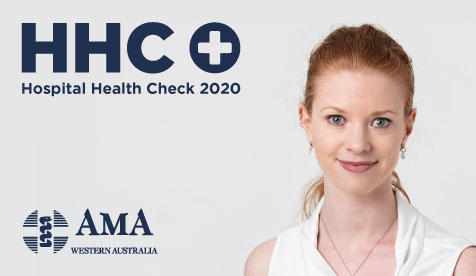

Blog

Access to leave remains an open wound
Monday November 16, 2020
Annual leave. It conjures up visions of landmark buildings and monuments, sunbathing on beautiful beaches, chasing waterfalls, hiking up rugged mountains, and visiting extravagant theme parks.
If it’s professional development leave, you’d probably find yourself learning a new skill, or excitedly presenting at a conference that will only serve to strengthen your application to a training program.
Or maybe you’re going on parental leave, brimming with excitement about painting the nursery and meeting your beautiful child. Perhaps it’s carer’s leave that you’re applying for, as you need to take a family member to an appointment. Maybe you are sick or have a medical appointment.
Any which way, access to leave is incredibly important for the health of our relationships and our overall wellbeing. The AMA (WA)’s Hospital Health Check (HHC) is an important tool in monitoring access to leave within different health services. Year in and year out, the survey has established a sound correlation between leave and junior doctor morale.
Whilst some hospital networks have struggled with access to leave since the initiation of the HHC in 2015, with their culture and morale impacted as a result, COVID-19 has completely altered the leave situation throughout the WA healthcare system.
With the arrival of the pandemic, the word “leave” is now almost always associated with “cancelled”, “no longer available” and “closed”. Unsurprisingly, the results from the 2020 HHC reflect this – with the exception of two WA hospitals (that scored D), the remainder received an F for leave.
Access to leave started to dry up for many junior doctors in March for multiple reasons. Since 2000, the number of medical graduates has doubled, yet the number of specialty training positions has not changed, causing a bottleneck of training applicants. Despite this increased number of medical graduates, we do not have enough internship positions for WA-trained doctors. Furthermore, we do not train enough doctors to fill the number of resident medical officer (RMO) jobs in WA hospitals.
Every winter, the arrival of Irish and UK doctors, many on leave relief terms, helps to fill these gaps in our system. Without adding to existing bottlenecks, this intake allows local RMOs to avail of their leave.
Such a system worked well until the pandemic. But now that our borders are closed and Australians are being preferenced for visas, flights and hotel quarantine, the WA healthcare system – and the junior doctors keeping it afloat – are struggling.
Three employing health services have reported a shortage of 128 RMOs. Two primary employing health services are yet to release their numbers.
We have been waiting for months but there is no light at the end of the tunnel. Whilst we have been reassured of reinforcements, the difficulty in accessing visas and flights, and the cap on hotel quarantine numbers means there is no reprieve in sight The current scenario is contributing not only to a lack of leave, but an increase in overtime and a redistribution of the workforce within some hospitals.
With the hard border, there is an excess of locum jobs offering excellent wages, and many RMOs and registrars are seeking better work-life balance.
Junior doctors are openly conversing in hospital corridors and common rooms about alternate careers using their medical degree, leaving clinical medicine, or leaving medicine altogether.
The lack of access to leave is no longer a hospital network problem or for that matter, a healthcare system problem. This is now an entire state’s problem.

